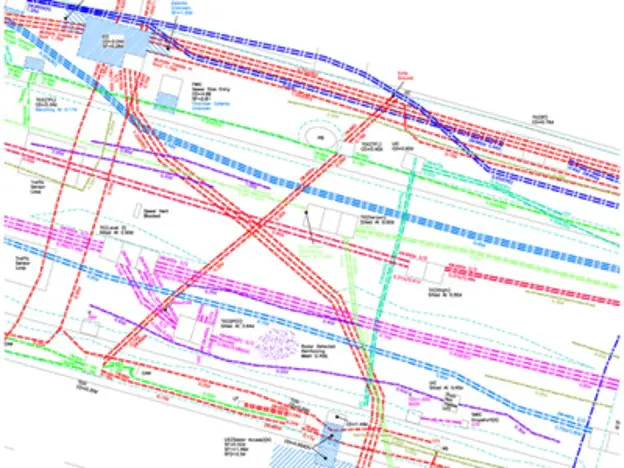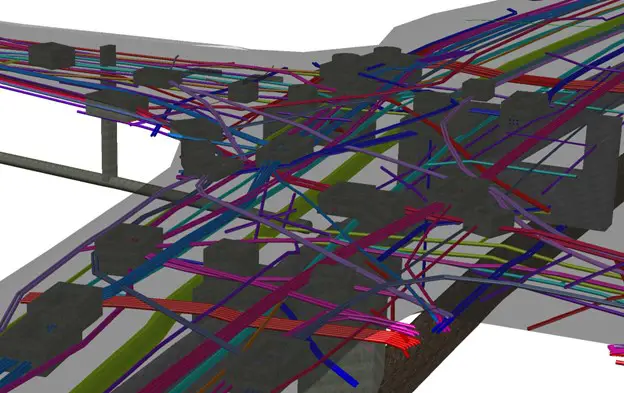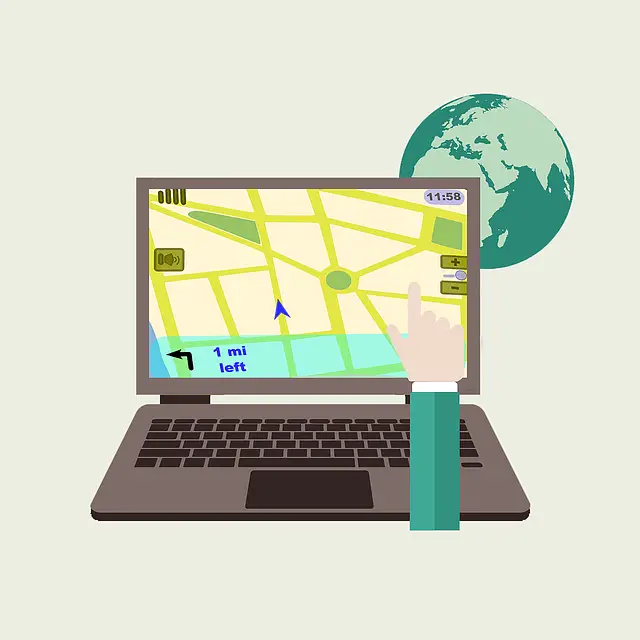Do you ever wonder about the intricate network of pipes and cables that lies beneath the city streets, silently keeping everything running smoothly? In “Mapping the Veins of the City: The Art of Utilities Mapping,” we will explore the fascinating world of utilities mapping. This art form, often overlooked and underappreciated, is crucial for maintaining the functionality and efficiency of our urban environments. Through advanced technologies and surveying techniques, utility companies meticulously map the underground infrastructure, ensuring accurate and comprehensive information. These maps serve as a guide to the intricate web of utilities, allowing for efficient maintenance and minimizing disruptions. Join us as we delve into the world of utilities mapping and discover the hidden artistry behind this essential urban practice.
Understanding the Importance of Utilities Mapping
Do you know why utility mapping is essential for the functioning of a city? Well, let me explain. Utilities mapping is the process of accurately mapping and documenting the location of various underground utilities such as water pipes, gas lines, and electrical cables. This information is crucial for urban planning, infrastructure development, and maintenance.
By having a detailed and up-to-date utilities map, city planners and engineers can make informed decisions about the placement of new utilities and infrastructure projects. It helps prevent costly mistakes such as accidentally damaging existing utilities during construction work. Additionally, utilities mapping ensures efficient and effective maintenance of the infrastructure by providing accurate information on the location and condition of underground utilities.

Not only does utilities mapping benefit city officials and engineers, but it also has a direct impact on the lives of residents. Accurate mapping ensures the timely and reliable delivery of essential services such as water, electricity, and gas to homes and businesses. It helps prevent service disruptions, improves response times during emergencies, and enhances overall quality of life.
The Challenges of Mapping Underground Infrastructure
Mapping underground infrastructure presents several challenges that require careful consideration and expertise. One of the main challenges is the lack of visibility. Unlike above-ground infrastructure, underground utilities cannot be easily seen or accessed. This makes it difficult to accurately map their locations and dimensions. Additionally, underground infrastructure is often complex and interconnected, with multiple layers of pipes and cables running beneath the city. This further complicates the mapping process, as it requires a thorough understanding of the network and the ability to differentiate between different types of utilities.
Another challenge is the accuracy of existing records. Over time, utility companies may have made changes or additions to their infrastructure without updating their records. This can lead to discrepancies between the recorded information and the actual locations of the utilities. Inaccurate records can result in costly mistakes during construction projects or emergency scenarios.
Furthermore, underground mapping requires specialized equipment and techniques. Ground-penetrating radar, sonar, and electromagnetic sensors are commonly used to detect and map underground utilities. However, these technologies have limitations and may not provide a complete picture of the infrastructure. Surveyors and technicians must also possess the necessary skills and knowledge to interpret the data and create accurate maps.
Advanced Technologies for Utilities Mapping
To overcome the challenges of mapping underground infrastructure, you can employ advanced technologies that enhance the accuracy and efficiency of utilities mapping. One such technology is Ground Penetrating Radar (GPR), which uses high-frequency radio waves to detect underground objects and create detailed images of the subsurface. GPR can accurately locate pipes, cables, and other utilities, reducing the need for costly and time-consuming excavation. Another advanced technology is LiDAR (Light Detection and Ranging), which uses laser pulses to measure distances and create highly accurate 3D models of the terrain.

LiDAR can be mounted on aircraft or drones, allowing for rapid scanning of large areas and providing valuable information about the location and condition of underground infrastructure. Additionally, Geographic Information Systems (GIS) play a crucial role in utilities mapping by integrating various data sources and providing a comprehensive view of the underground network. GIS software enables the visualization, analysis, and management of utility data, improving decision-making and facilitating maintenance and repair activities. By harnessing these advanced technologies, you can overcome the challenges of mapping underground infrastructure, leading to more accurate and efficient utilities mapping processes.
Surveying Techniques for Accurate Mapping
Employing precise surveying techniques is essential for achieving accurate mapping of underground infrastructure. To ensure the highest level of accuracy, consider the following techniques:
- Ground Penetrating Radar (GPR): GPR uses electromagnetic waves to detect and map subsurface features. It provides valuable information about the depth and location of underground utilities.
- Global Navigation Satellite Systems (GNSS): GNSS technology, such as GPS, allows surveyors to accurately determine the coordinates of points on the ground. This data can be used to create precise maps of underground infrastructure.
- Total Station: A total station combines electronic distance measurement and angle measurement capabilities. It is commonly used in surveying to determine the location of points and collect accurate measurements.
- Laser Scanning: Laser scanning technology produces detailed 3D images of the environment by measuring the distance to objects using laser beams. It can be used to create highly accurate maps of underground infrastructure.
Integrating Data Sources for Comprehensive Maps
By integrating multiple data sources, you can create comprehensive maps of underground infrastructure. In today’s digital age, there is an abundance of data available that can be leveraged to enhance the accuracy and completeness of utility maps. By combining data from various sources, such as existing maps, satellite imagery, ground-penetrating radar surveys, and utility records, you can create a holistic view of the underground network.
One key benefit of integrating data sources is the ability to verify and cross-reference information. Different data sources may provide different perspectives and levels of detail, allowing you to validate the accuracy of the data and identify any inconsistencies. This helps to minimize errors and ensures that the final map reflects the true state of the underground infrastructure.
Furthermore, integrating data sources enables you to fill in the gaps and provide a more comprehensive picture. For example, existing maps may lack information about recently installed utilities, while utility coordination best practices may not include precise location details. By merging these datasets, you can overcome these limitations and create a more detailed and up-to-date map.
In addition, integrating data sources enhances the efficiency of the mapping process. Instead of relying solely on manual surveying techniques, which can be time-consuming and labour-intensive, you can leverage existing data to streamline the mapping process. This not only saves time but also reduces costs associated with field surveys.
Ensuring Safety and Efficiency in Utilities Mapping
For ensuring safety and efficiency in utility mapping, you should prioritize the use of advanced technology. Here are four reasons why:
- Accurate data: Advanced technology, such as Geographic Information Systems (GIS), allows for precise mapping and data collection. This ensures that utility lines are accurately represented on maps, reducing the risk of errors and potential accidents.
- Real-time updates: With advanced technology, utilities mapping can be updated in real-time. This means that any changes or repairs made to utility lines can be immediately reflected on the maps. This allows for better coordination and planning, minimizing downtime and disruptions.
- Enhanced safety: By using advanced technology, you can identify potential hazards and risks associated with utility lines. This information can be used to implement safety measures, such as marking underground lines and avoiding construction in high-risk areas. This helps protect both workers and the general public.
- Improved efficiency: Advanced technology streamlines the mapping process, making it faster and more efficient. This saves time and resources, allowing utilities companies to allocate their resources more effectively. It also enables better decision-making, as accurate and up-to-date maps can help identify areas for improvement and optimization.

Mapping the Future: Predictive Analytics in Utilities Mapping
To stay ahead in utilities mapping, you should leverage predictive analytics to anticipate future challenges and optimize operations. By utilizing predictive analytics, you can forecast potential issues, such as equipment failures or network overload, before they occur. This allows you to proactively address these challenges and prevent costly downtime or service disruptions.
Predictive analytics in utilities mapping involves analyzing historical data, such as maintenance and repair records, as well as real-time data from sensors and monitoring devices. Advanced algorithms and machine learning techniques are then applied to this data to identify patterns and trends. With this information, you can make data-driven decisions to optimize your operations and allocate resources more efficiently.
For example, predictive analytics can help you identify areas of the network that are at higher risk of failure or in need of maintenance. By prioritizing these areas, you can allocate resources effectively and prevent potential issues from escalating. Additionally, predictive analytics can help you optimize energy usage by identifying areas where energy consumption is higher than normal and implementing measures to reduce it.
Collaborative Approaches to Utilities Mapping
When collaborating on utilities mapping, it is essential to align with other stakeholders to ensure accurate and comprehensive data. By working together, you can create a more reliable and detailed map of the city’s infrastructure. Here are four collaborative approaches that can be used to achieve this:
- Establish partnerships: Collaborate with utility companies, local government agencies, and other relevant organizations to gather information and share data. This will help avoid duplication of efforts and ensure that all stakeholders have access to the most up-to-date information.
- Standardize data formats: Agree on a common data format that all stakeholders can use to share their utility mapping data. This will make it easier to integrate different datasets and create a unified map.
- Conduct joint field surveys: Coordinate field surveys with other stakeholders to collect accurate and consistent data. This will help identify any discrepancies or missing information in the existing maps and ensure that the new map is as comprehensive as possible.
- Share resources and expertise: Collaborate with other stakeholders to share resources, such as equipment and personnel, to conduct surveys and update the utilities map. By pooling your resources and expertise, you can reduce costs and improve the quality of the map.
Related Articles: